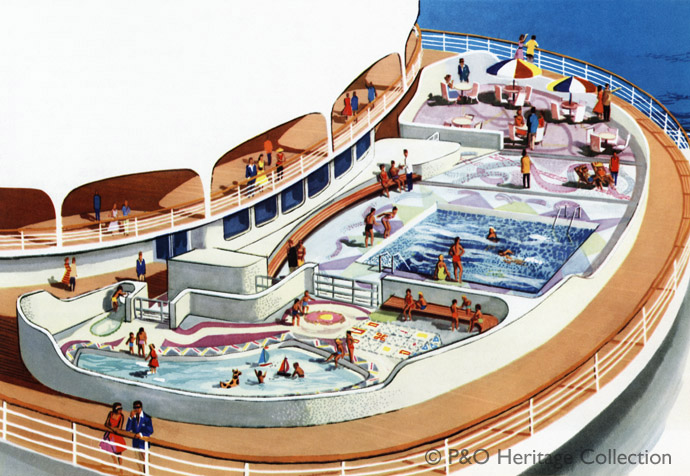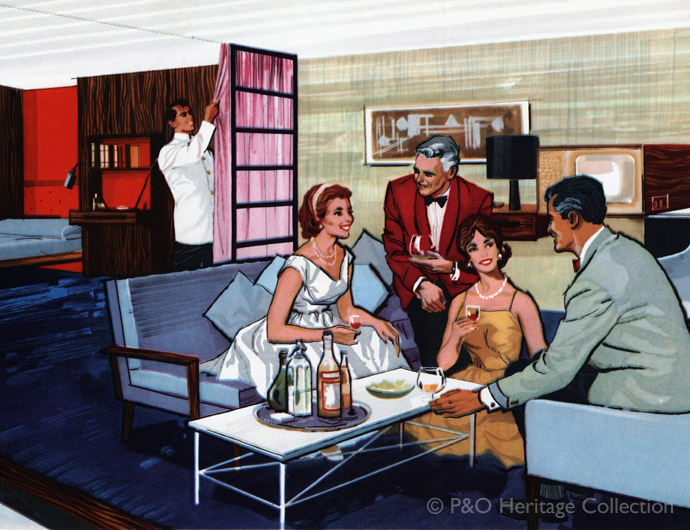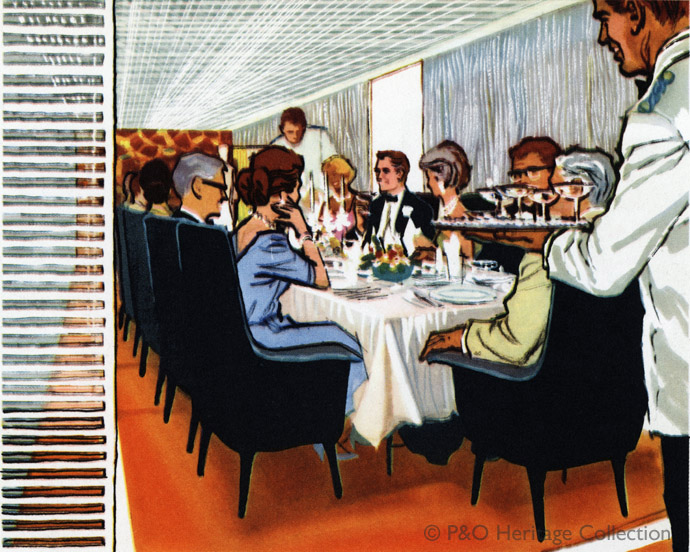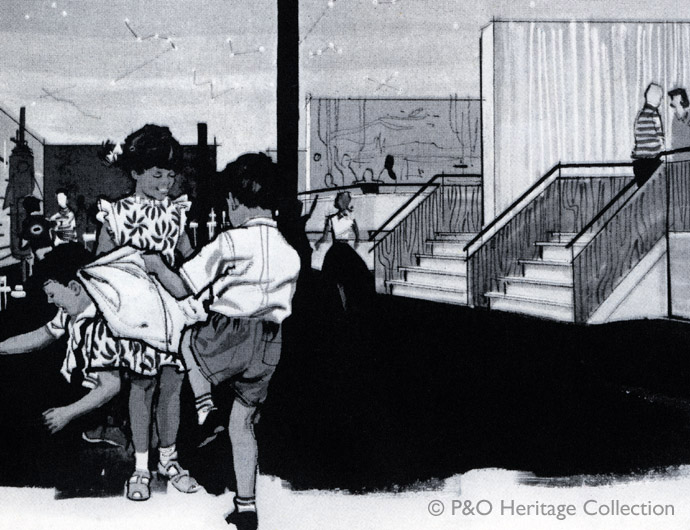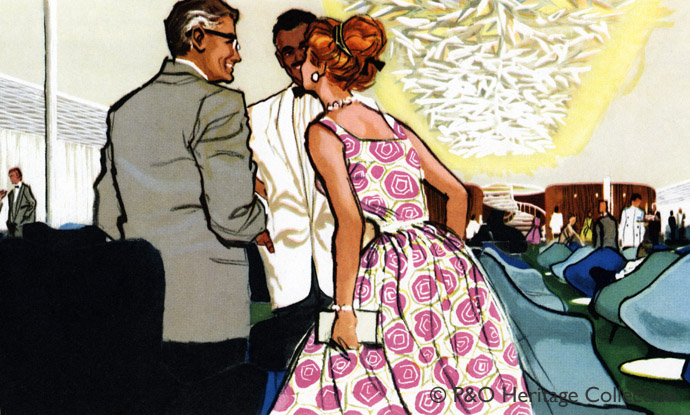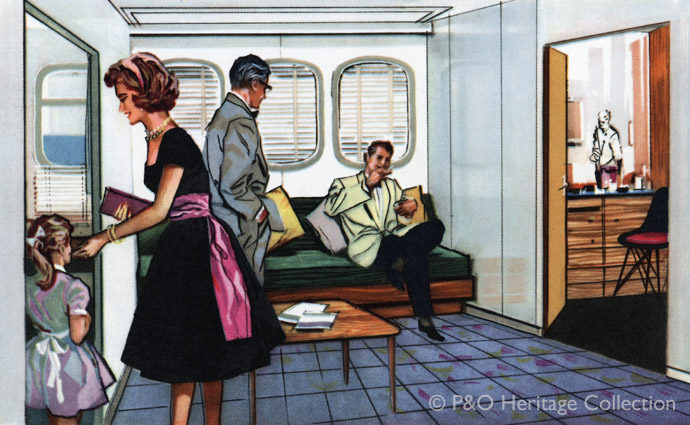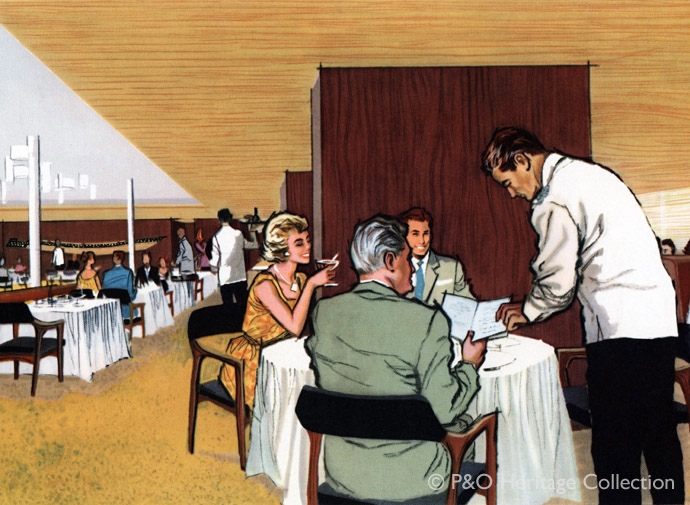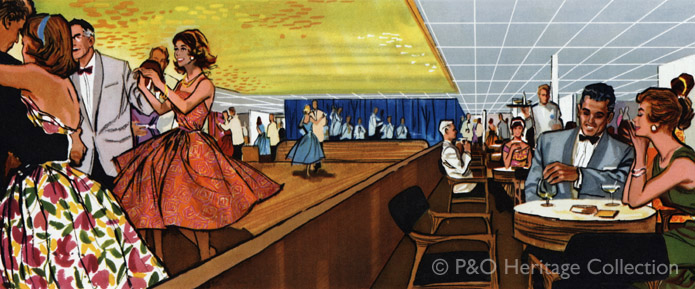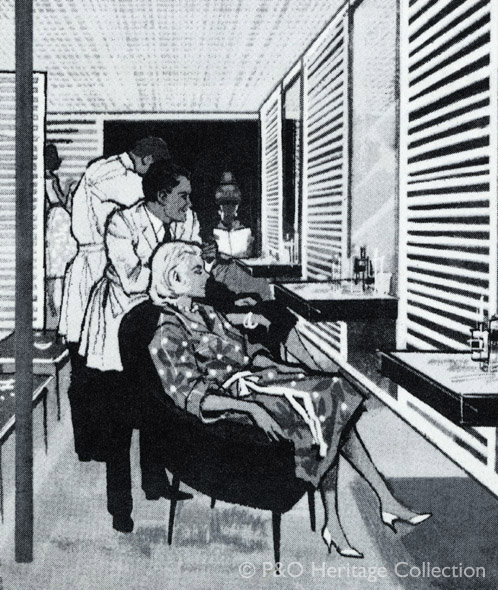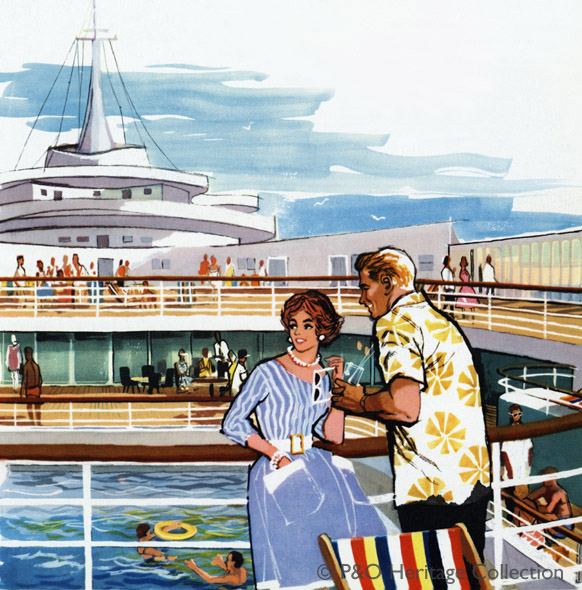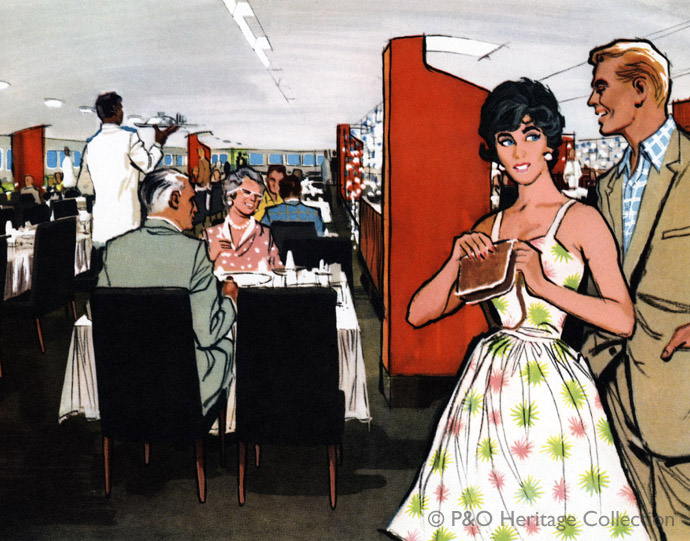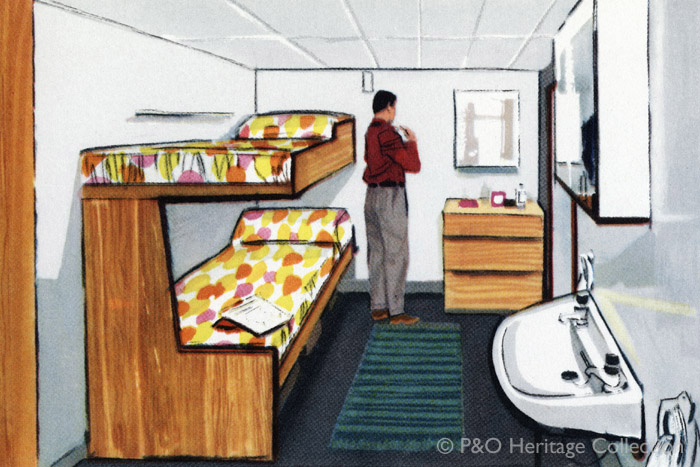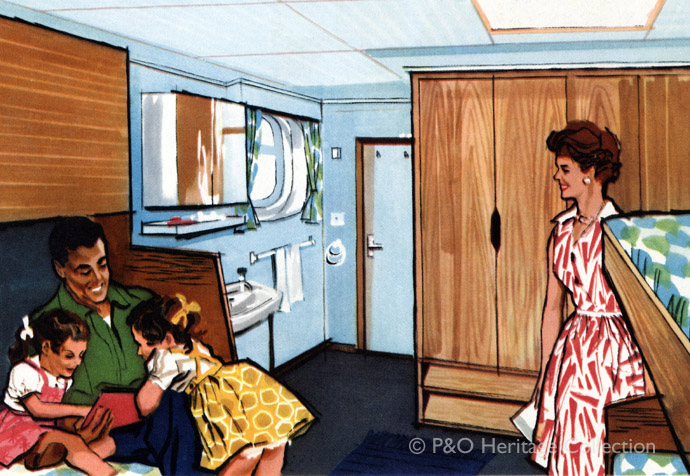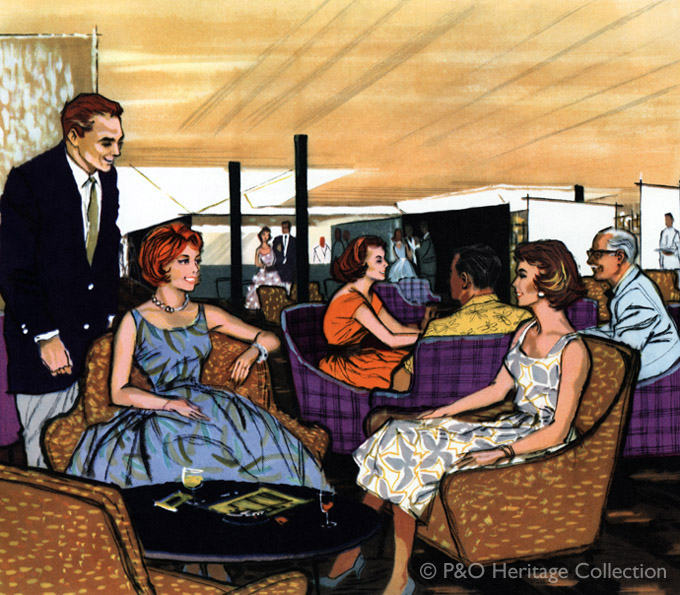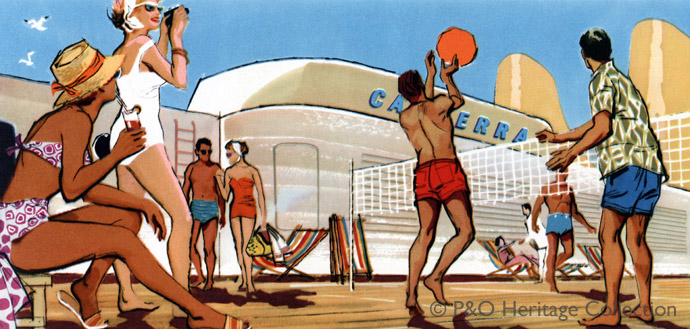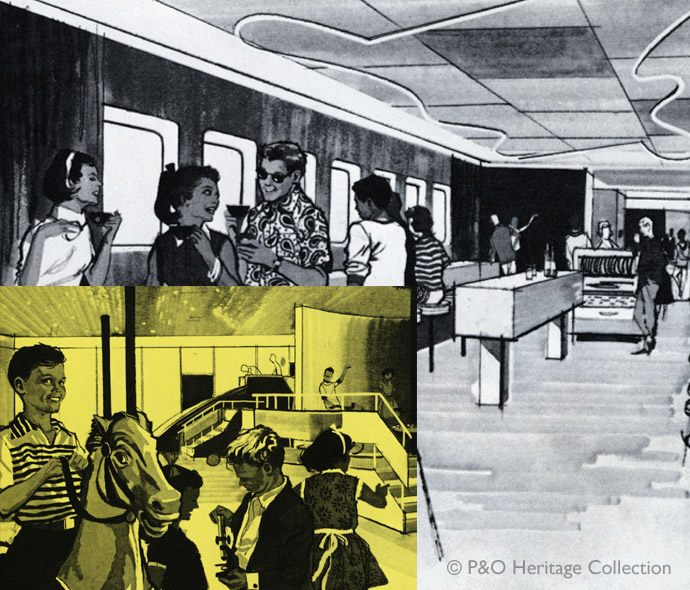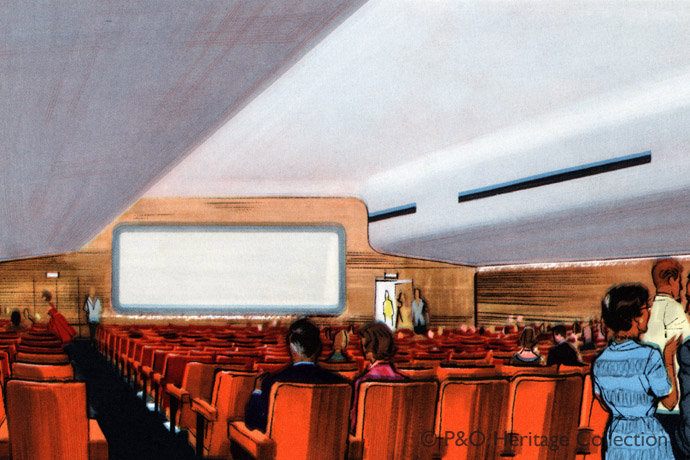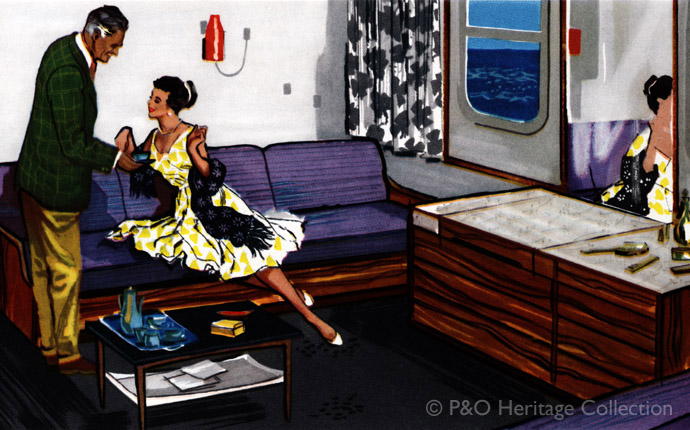The design for the interior of CANBERRA fell to Sir Hugh Casson who was appointed by Sir Donald Anderson to work with John Wright and Barbara Oakley. Sir Donald was acting on the advice of his brother, Sir Colin Anderson, who had led something of a modernist revolution in the design of Orient Line ships from the 1930s. In the late 1950s the siblings had much in common; they both presided over major shipping lines and each had a new ship in construction. ORIANA and CANBERRA were merely months apart and both were destined for the Australian trade. With so much in common CANBERRA had to be consciously different; but, in truth, both drew heavily on Sir Colin's passion and patronage of contemporary art and design.
Sir Hugh Casson was an informed choice. He had been Director of Architecture for the Festival of Britain, designed the interiors for the RY BRITANNIA and as Professor of Interior Design at the Royal College of Art he had both pedigree and form. Casson lead the team and, together with Neville Conder & Partners and Timothy Rendle A.R.I.B.A., designed the First class public rooms. The design of Tourist Class was entrusted to John Wright F.R.I.B.A. whilst Barbara Oakley was responsible for decorating and furnishing cabins, alleyways and officer’s and crew’s quarters.
Casson set out the principles which would govern CANBERRA's design. In summary:
Early artists' impressions encapsulated this bold, bright and thoroughly modern approach to CANBERRA's design.
